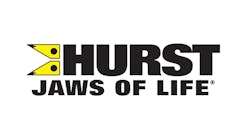TX Firefighters Recall Deadly 133-Vehicle Pileup
By Luke Ranker
Source Fort Worth Star-Telegram
Mar. 17—Firefighters had walked back and forth between their trucks and the pile of cars where passengers were trapped so many times they began to instinctively know where to step, or not to step — a sunroof that wasn't stable or a hood that was too slick. Much of their icy walk was done on top of vehicles caught in the 133-car pileup near downtown Fort Worth.
"There were only a couple times I remember touching the surface of the road at all," Fort Worth Fire Lt. Brian Call said, recalling his work in the TEXpress toll lanes of I-35W where cars had slid into each other north of downtown. "It was sort of crazy."
In an interview with the Star-Telegram Tuesday, Call and Lt. Chris Nelson described the controlled rescue of dozens of motorists trapped in the pileup that killed six and injured more than 60 in the early morning hours of Feb. 11. They provided a firsthand perspective of how responders calmly assessed the more than half mile of wreckage and worked swiftly to free people from "the mountain of vehicles" despite icy conditions.
Those who first arrived on the scene encountered slick ice that made traversing to the pileup dangerous. Audio of firefighters' radio traffic detailed how crews called for kitty litter and sand while working to free trapped passengers.
Around 6:15 a.m., Call was finishing a 24-hour shift at another wreck on I-35W when his crew heard radio traffic about the pileup. Though they hadn't been dispatched, the group headed toward the scene. The company based out of Station 2 in downtown is regarded as the department's experts in rescues, said spokesman Mike Drivdahl, calling them the "Navy SEALs of the fire department."
"Initially it was a little overwhelming to come up on something like that and try to figure out what's going to be the easiest and safest way to work," Nelson said.
The National Transportation Safety Board is investigating the cause of the crash, which appeared to have started after a freezing rain shower left a layer of ice on the TEXpress toll lanes of I-35W.
Video shot by passers-by and shared on social media showed numerous cars, SUVs and 18-wheelers losing control as they came over a small hill on the southbound lanes of I-35W just past 28th Street, then smashing into each other.
With the freeway shut down, Call's group entered I-35W traveling north from the southbound exit to Northside Drive. Crews who had arrived earlier had already walked the length of the crash, looking for injured passengers. Using yellow emergency scene tape tied to vehicles, they identified which had been cleared, allowing Call's four- man crew to move directly to a trapped passenger whose vehicle was caught under an 18-wheeler that had tipped over.
Besides the massive claw used to pry vehicles open, extraction crews also needed long, heavy struts. Like extra large car jacks, these struts extend from about six feet to almost 10, Nelson said.
Getting all of the pieces to the site of a trapped passenger inside the expressway required several trips, Call said, so the crew split in half with two men working to free the person and two relaying the tools from the truck.
Work at the first stop was quick because a crew already on scene had been working to free the passenger while Call's group stabilized the trailer, which was leaning precariously.
Once finished, the group moved farther down the pileup to a Fedex truck. Radio traffic indicated repeated calls from first responders there for help extracting someone from the jumbled mess of vehicles.
When Call arrived at the Fedex truck, he found a SUV caught under a pickup truck. That truck was halfway under the Fedex trailer, which was tilted over. Unable to work directly next to the vehicles, his crew set up equipment in the bed of a pickup truck next to the tangled up cars.
At one point a man caught inside one of the vehicles had to be told to move around so firefighters could safely free him, Call said.
When asked to described how the crew was able to move quickly under icy conditions, Call remained all business, simply saying: "You got to do what you got to do, especially when somebody is alive, you know someone that can be rescued."
To get the scene around 7:45 a.m. Nelson hopped in another firefighter's personal truck, which was loaded with kitty litter.
It was clear when Nelson arrived the work was transitioning from rescue to recovering bodies, he said. Nelson, whose shift was just beginning, was at the crash for nearly 12 hours working to free some of the six people who did not survive.
Nelson's crew worked slowly in conjunction with a commercial wrecker service. Often cars had to be hoisted in the air over the concrete barrier between the express lanes and the freeway.
At one point his crew scrambled to change gears from recovery the dead to searching for someone potentially trapped alive. They had received a report from police who said someone was on Facebook Live claiming to still be caught in the wreckage hours later. Nelson said no one was found.
Later in the day after recovering bodies from two areas of entrapment, Nelson's crew moved to a large mess of cars in the middle. He declined to describe what the cars looked like, but said it was obvious someone had been trapped.
"The only question was the potential for another body... because of the position of the cars," Nelson said, talking about a specific section of the crash where the sixth person was found.
"You couldn't have gotten to them, physically," he added after a long pause.
___
(c)2021 the Fort Worth Star-Telegram
Visit the Fort Worth Star-Telegram at www.star-telegram.com
Distributed by Tribune Content Agency, LLC.






